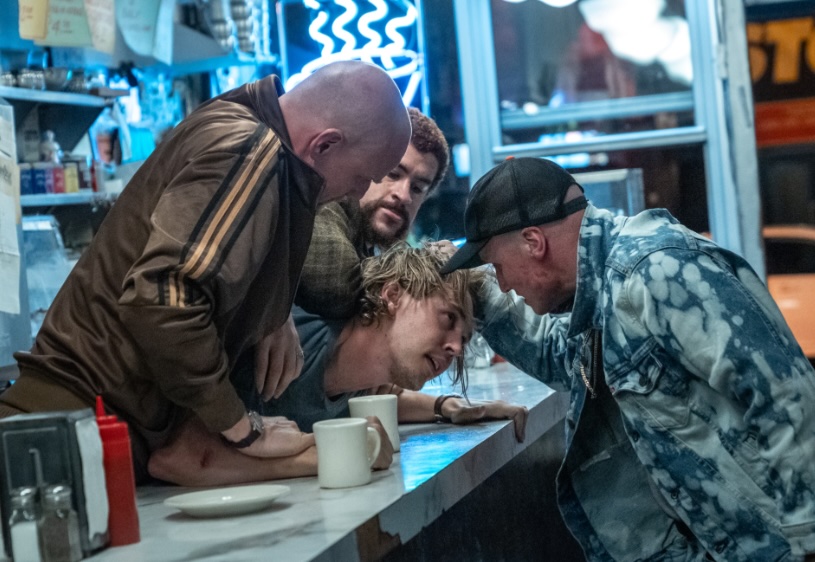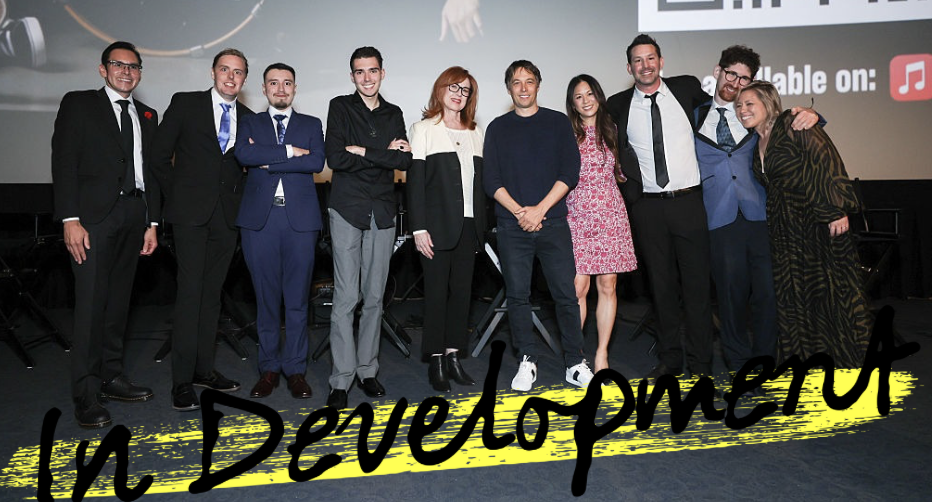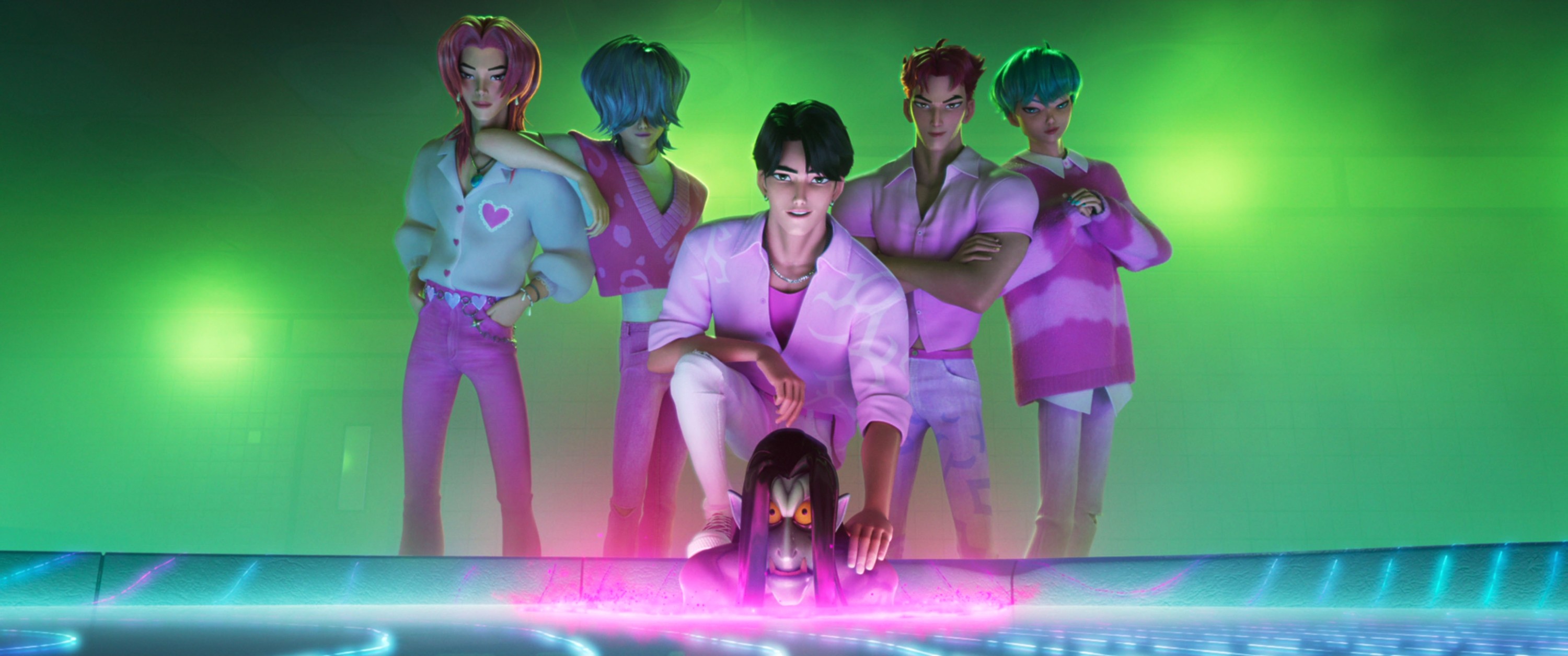By the time we lay eyes on the tenth or eleventh full-sized booze bottle tucked into the various nooks and crannies of Hank Thompson’s (Austin Butler) Lower East Side apartment, there’s no question this guy has problems. A generally directionless personality, a seriously scarred-up knee, and recurring nightmares of a vicious car crash that keep him GASP waking up in the middle of the night long ago telegraphed just that, and that’s all baked into the first 15 minutes of Darren Aronofsky’s scuzzy and off-kilter “Caught Stealing.”
That sort of exposition might fly better on the page — hell, it did, as Aronofsky’s film is based on a Charlie Huston novel of the same name, with the writer also providing the feature’s screenplay — but it irritates when translated to a cinematic adaptation. For all the texture of the film, which was shot in and around a New York City vibrantly retrofitted to the story’s 1998-set specifications (costumes, music, locations, the whole kit), the hammy way important beats and plot points are served up feels out of step. It doesn’t pop, at least until the film’s final act, which finally brings together Aronofsky’s disparate parts and shows an inkling of what the filmmaker was attempting to capture.

But the road there? It’s long, and filled with blood, guts, bones, puke, shit, and piss, plus an emergency organ removal. None of it goes down easy, but for as grim and gritty as “Caught Stealing” is, it only really gets going when leaning into the dark humor and profound absurdity at its center. “I wanted this crime caper to be funnier”? It’s true — you’ll want this crime caper to be funnier or at least more in tune with itself, and the moments in which it dares to hint at something much better, just under the surface.
But back to shiftless Hank. When the film opens, things aren’t too bad for the dude. He’s got a bartending job he likes at a local joint, a nice semi-girlfriend (Zoë Kravitz as Yvonne) looking to make things more serious, and some baseball games to watch. In fact, his beloved San Francisco Giants — and we know he loves the Giants, thanks to his Giants hat, the Giants pennants and posters that decorate his apartment, and his perpetual sign-off to his mom after their brief telephone calls (“Go, Giants!”) — are trying to qualify for the baseball post-season with a Wild Card clinch. (They won’t and they didn’t.)

One weird thing? His punk neighbor Russ (Matt Smith, having an infectious amount of fun) is leaving town suddenly, and he’d appreciate it if Hank could feed his cat, Bud (Tonic the cat, in a star-making turn). No sweat! Well, except for the roided-out dudes who show up, try to knock down Russ’ door, and are clearly looking for something very nefarious indeed. When Hank tussles with them, he loses both a kidney and the film’s sense of stakes. It’s a question that will rankle throughout the rest of the film: given what we know about these mobsters, why won’t Hank give them what they want?
Alas, the answer is simply, “well, he just won’t,” and so sets off Hank’s journey into the criminal underworld of downtown New York City and beyond, as those mobsters give way to more (and scarier!) baddies, all of them eager for whatever Russ was hiding (or not?) in his apartment. While the general shape of Hank’s problems can hold for a bit — he’s got something these people want, and he’s not eager to share — the film’s strong supporting cast fares better at pushing things along. Griffin Dunne, Carol Kane, Liev Schreiber, Bad Bunny, Regina King, Vincent D’Onofrio, and more (plus a murderer’s row of recognizable NYC voices) all add the kind of sparkle that Butler’s more restrained (and often quite compelling) performance can’t quite allow for.

That supporting cast also hints at something compelling: The very nature of performance itself. Is Hank just playing at being a fuck-up baseball junkie, or is he hiding deeper reserves? What does it mean that we can only see other characters through the lens of their jobs (“the cop,” “the gangster,” “the Yiddish mobsters”) or their put-on costumes (Dunne hides under a dry-looking wig, Smith’s giant mohawk is practically its own character)? Who here is just playing to an expectation, and who might surprise us? Some do, but the twists that engender those surprises, well, they just feel like exposition, too.
Mostly, the tension between the film’s increasingly dark story and its love of rudimentary gags — wouldn’t it be so funny if this guy who mostly subsists on booze physically couldn’t drink anymore? — doesn’t abate until the film’s final act. That’s when things click into place, when the big swings come together, and “Caught Stealing” nearly finds its way to (insert your favorite positive baseball metaphor here). A wild card? Not wild enough, really.
Grade: C+
Sony Pictures will release “Caught Stealing” in theaters on Friday, August 29.
Want to stay up to date on IndieWire’s film reviews and critical thoughts? Subscribe here to our newly launched newsletter, In Review by David Ehrlich, in which our Chief Film Critic and Head Reviews Editor rounds up the best reviews, streaming picks, and offers some new musings, all only available to subscribers.



